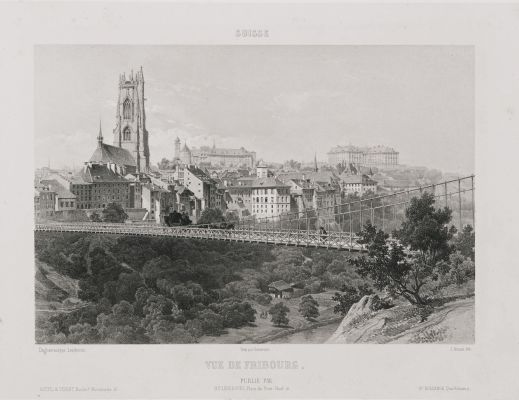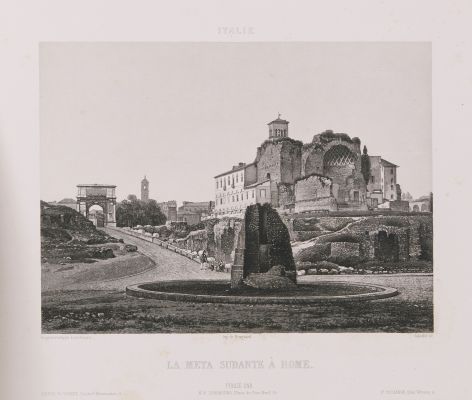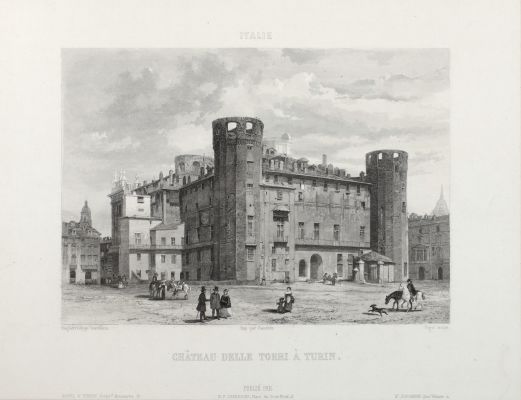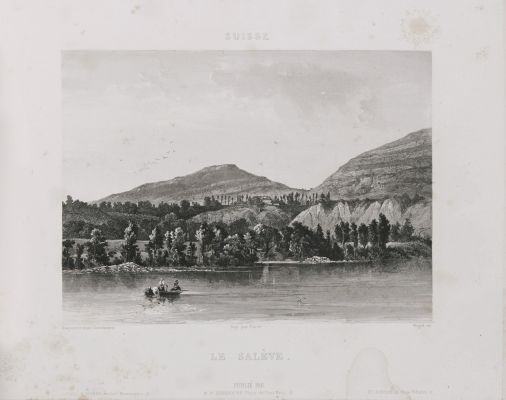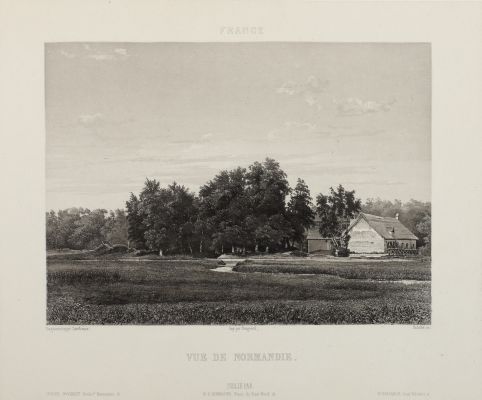
Title
Église des Invalides, Facade Meridonale (Paris) (proof)Artist
Lerebours, Noël Paymal (French, 1807-1873)Publication
Excursions DaguerriennesDate
1842 plate (1841 negative)Process
Engraving (from photograph)Atelier
Goupil et VibertImage Size
22.7 x 15.4 cmSheet Size
39.3 x 26 cm
From the collection of Gérard Lévy. This rare early lithograph proof is the work of Charles Michel Fichot made after a daguerreotype in preparation for inclusion in Lerebours’ landmark Excursions daguerriennes.
On 14 May 1842, following the success of the first series of Excursion Daguerriennes, a second series of plates was announced. Much to the dismay of excited subscribers, publication of the second series was delayed. To assuage his clients, Lerebours issued an announcement attributing the delay to the inclusion of the new, groundbreaking etching process invention of Fizeau. In addition to explaining the delay, Lerebours also announced the forthcoming inclusion of six lithographs. Our print appears to be an early proof of one of the lithographs before the addition of clouds in the sky which appear in the final published print.
A translation of the announcement explaining the addition of lithographs to the project:
Since January we have not published a single sheet of Excursions Daguerriennes; a large number of subscribers having sent us complaints on this subject, we owe them an explanation. Others us asked why we did not admit several genres, which would allow us to contribute to our work a large number of young talented artists; and we were told of the lithograph that would come, we were told, destroy the monotony which always results from a numerous collection of engravings executed by the same process, even if they were all superior. We will respond to this last observation. We will first say that it is difficult to adopt to everyone’s taste, and that having announced aquatint engravings on steel, the request made by a large number of substituting stone for steel, may well not be to the taste of a few other subscribers.
We recognize that in several plates the intelligence of the pencil would have been preferable to the profession of the aquatintist; but is there a single person who has not been fully satisfied with the magnificent boards of Mr. Hurliman, so admired by artists and all true connoisseurs? Moreover, without being exclusive, we believe that any work requires unity, a thought, and we chose aquatints because it is the kind that came closest to most of the models we had to reproduce.
Nevertheless, wanting to prove that we take the opinion into consideration, we decided to insert in our complete collection six lithographs which, we hope, will leave nothing to be desired, because we will entrust some performance to the finest artists. This separate work will allow us to complete our work for the month of December next, which would not have been possible without it; the exclusive supporters of aquatint will wish, we hopefully we absolve ourselves in favor of this cause.
Now, we will justify ourselves for the delay in our publication.
For a long time now, people who are concerned with art, those who keep up to date with the news scientists, knew that they were busy transforming daguerreotype prints into engraved plates; But no (mais), although we know all the sagacity of the skillful chemist to whom we already owe gold chloride and brominated water, so many difficulties seemed insurmountable in this enterprise, that no one believed in a success: eight days ago this success became certain, and the results obtained were presented to the Academy of Sciences. We have thought that the subscribers of Excursions Daguerriennes would be grateful to us for being the first to know about this admirable result, and we had a separate print made of a proof of one of the bas-reliefs of Notre-Dame de Paris.
We ask our subscribers to accept this first specimen, in compensation for the delay that we brought in our post. [1]
N.-P. LEREBOURS.
Accompanying the announcement was a photogravure of One of the Bas-Reliefs of Notre-Dame de Paris reproduced directly from an etched daggureotype plate and therefore a sample of the first ever photograph published in printer’s ink.
References
[1] Bound into the first page of Excursions daguerriennes : vues et monuments les plus remarquables du globe. Numérisation de : RES PHOTO VH-40 (A, 2)-PET FOL / [daguerreotype Lerebours] Lerebours, Noël-Marie Paymal (1807-1873). Photographe see See http://catalogue.bnf.fr/ark:/12148/cb33379774d.


